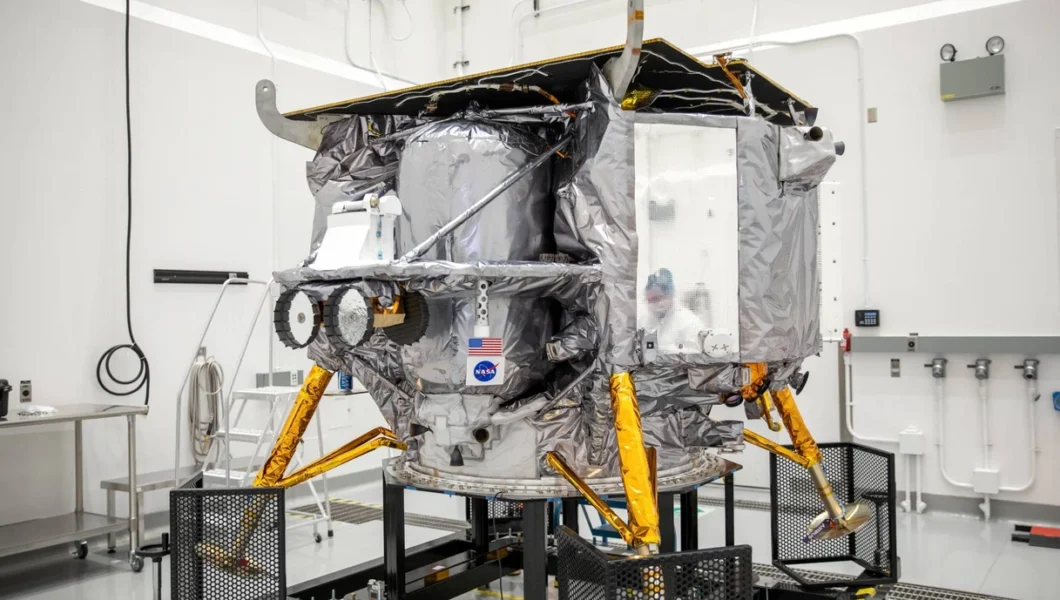Introduction
The upcoming launch of the Peregrine lander by astrobotic on January 8, 2022, carries significant implications and risks as it aims to become the first private spacecraft to land on the moon. This bold endeavor represents a milestone in human space exploration and underscores the potential for private enterprise to contribute to lunar missions.
The Challenge and Significance
The Peregrine lander, part of NASA’s commercial lunar payload services (CLPS) initiative, symbolizes a pioneering mission that pushes the boundaries of space exploration. As a privately built spacecraft, it is poised to redefine the role of the private sector in lunar exploration and open new possibilities.
Company Profile
astrobotic, based in Pittsburgh, has spearheaded the development of the Peregrine lander. The company’s involvement in this groundbreaking mission highlights its commitment to advancing space technology and its pivotal role in propelling the future of lunar exploration.
Lunar Payloads and Objectives
The Peregrine lander is set to carry a diverse set of payloads from both nasa and commercial entities, underscoring the collaborative nature of this mission. This venture represents a critical step toward establishing Pittsburgh as a significant center for lunar exploration, aligning with nasa‘s objectives.
Launch Details and Location
The scheduled liftoff of Peregrine Mission One on January 8, 2022, from the Space Coast marks a historic moment as it will be the debut launch of United Launch Alliance’s (ULA) new Vulcan centaur rocket. The choice of launch site and rocket speaks to the magnitude of this mission.
Lunar Landing and Mission Objectives
Peregrine Mission One aims to touch down on the moon in late February in the Sinus Viscositatis (Bay of Stickiness), a site adjacent to the Gruitheisen Domes. This strategic positioning near the Oceanus Procellarum (Ocean of Storms) highlights the precision and planning involved in this endeavor.
Global Collaboration and Institutional Support
The inclusion of seven countries in this mission, alongside nasa‘s substantial investment, underscores the international significance of the Peregrine lander’s mission. This global collaboration exemplifies a shared vision of advancing lunar exploration for the benefit of humanity.
Historical Context and Entrepreneurial Resilience
John Thornton, the CEO of astrobotic, reflects on the arduous journey that led to this pivotal moment, highlighting the perseverance and determination required to overcome challenges in space exploration. The narrative of resilience and vision underpins the narrative of the private sector’s role in lunar missions.
The Role of CLPS and Future Prospects
NASA’s commercial lunar payload services (CLPS) initiative has paved the way for partnerships with private companies, offering opportunities to deliver science and technology to the lunar surface. This collaborative model holds the promise of fostering a sustainable and mature industry for lunar exploration.
Challenges of Lunar Preparation and Innovation
As astrobotic prepares for lunar missions, the unique challenges of simulating lunar environments on Earth and the complex technical requirements underscore the intricacies of lunar exploration. The innovative spirit driving technological advancements in space travel sets the stage for transformative developments.
Team and Accomplishments
Thornton lauds the dedicated team at astrobotic, emphasizing their instrumental role in shaping the company’s trajectory. Their collective efforts in lunar landers, planetary mobility, space tech, and business development have contributed to positioning astrobotic as a key player in the space industry.
Diverse Payload Manifest and Unique Contributions
The payload manifest for Peregrine Mission One reflects a blend of scientific, cultural, and symbolic elements, including a digital art gallery, a lunar Bitcoin, and a capsule containing messages from thousands of children worldwide. The amalgamation of artifacts adds a unique dimension to the mission.
Launch Preparations and Risk Factors
The partnership with United Launch Alliance (ULA) for the inaugural liftoff of the Vulcan centaur rocket introduces an added element of anticipation and risk. The magnitude of this event is underscored by the meticulous preparations and the inherent challenges of space launches.
Implications of Mission Success and Failure
The successful execution of Peregrine Mission One stands to mark a pivotal moment in human space exploration. However, the acceptance of potential failures as essential learning experiences reinforces the resilience and iterative nature of space Missions.
Path Forward and industry Evolution
Thornton’s vision of creating stability and certainty for the industry, along with the growing demand for private lunar exploration, points towards an evolving landscape in space technology. The opportunity for researchers and explorers to leverage existing technology amplifies the prospects for future lunar missions.
Conclusion
The impending launch of the Peregrine lander by astrobotic represents a pivotal juncture in the advancement of private sector contributions to lunar exploration. This mission encapsulates the spirit of collaboration, innovation, and resilience that fuel the next frontier of human space exploration.
Source: space








No Comments